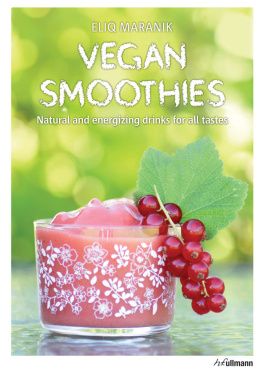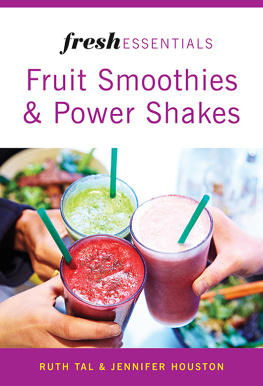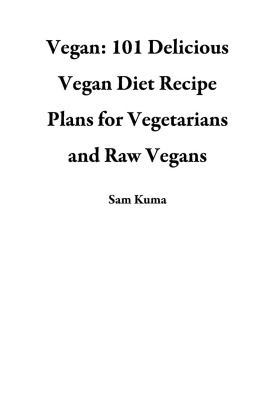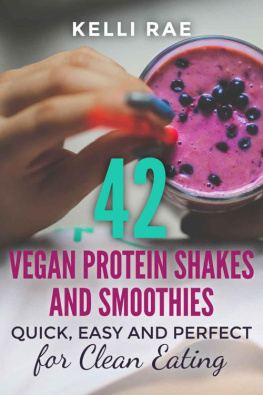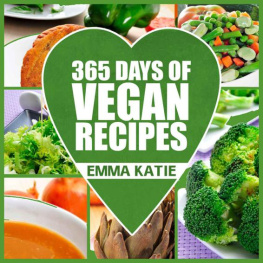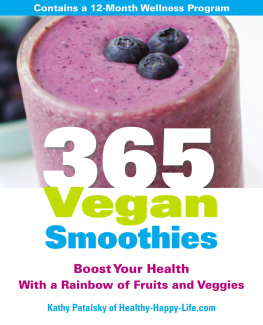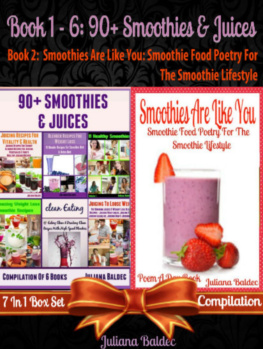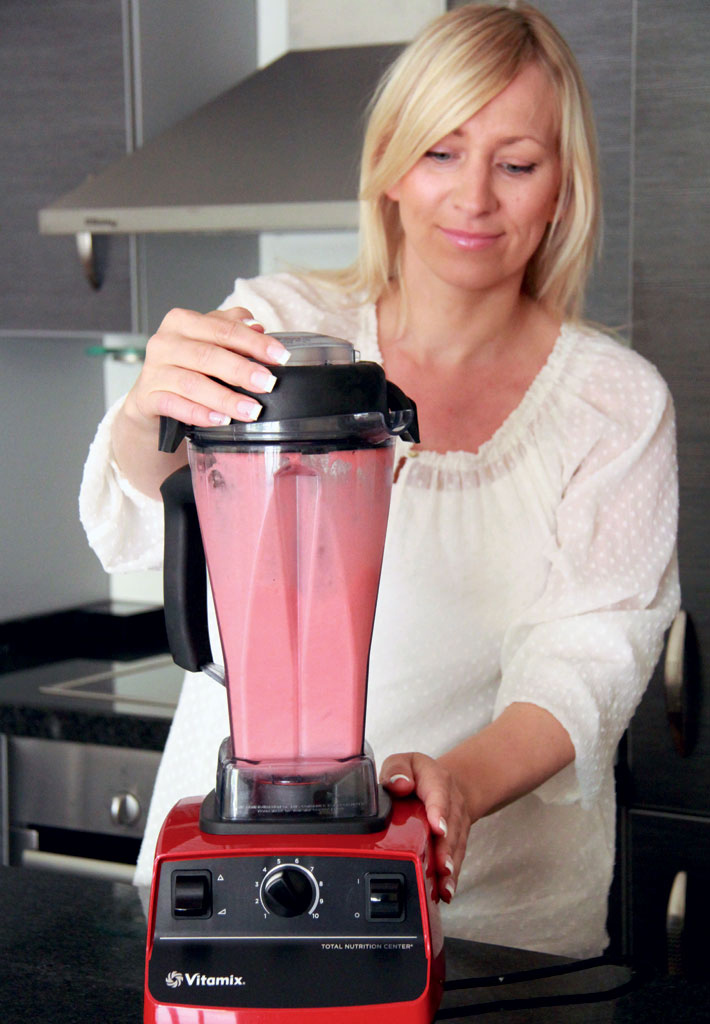THE UTENSILS YOU WILL NEED
To prepare smoothies you dont really need anything more than a sharp knife and a blender, but there are a lot of utensils that make the work easier and make the results both tastier and more elegant.
BLENDER. This is a must for making smoothies. A hand-held blender with its own bowl also works well but I recommend investing in a proper blender with a jug. They are more fun and easier to work with. Pour all the ingredients in, press the button, and the smoothie is ready to serve. Blenders are sometimes called mixers.
There are a few things to think about when you are choosing a blender, for example how powerful the motor is, how many speeds it has, how much it can hold, and whether it can crush ice. I recommend a blender with a glass jug as they are more robust, easier to keep clean, and not as easily scratched or discolored as the plastic ones. Nowadays there are jugs made of high quality plastic that do not get scratched or discolored, but they are usually considerably more expensive. A blender does not have to be able to crush ice but it is definitely an advantage if it does.
If you are choosing between different machines, think about how often you want to make smoothies and how many. If you only make smoothies two or three times a month maybe the hand-held blender you already have in the kitchen drawer will be good enough, but if you want to become a smoothie freak, as I am, it is worth investing in a high quality machine that costs more, lasts longer, has a long guarantee, and can basically blend anything. A good blender pulverizes the ingredients thoroughly, which makes it easier for the body to absorb the nourishment. I use a Vitamix that can blend anything from seeds, nuts, ice, frozen fruit, and small berries to hard vegetables such as carrots, beets, and all kinds of leaves.
JUICER. To make smoothies with hard vegetables and fruit you need a juicer that first releases the juice. There are two kinds of juicer: a juice extractor and a juice press. When you are choosing your model, remember that performances differ and they produce different quantities of juice. If it is going to be used frequently it is probably better to invest in a proper press rather than in a juice extractor.
PRESS. Chops the fruit and vegetables into small pieces. These are then pressed through a fine metal sieve. Juice presses are slightly more expensive than juice extractors but can cope with bigger volumes and are more efficient. Also the juice is more nourishing since more enzymes are preserved in the process. Juice made with a press should be drunk within 48 hours, preferably immediately. The press should be washed up immediately after use to avoid the fruit residues getting dried and stuck on.
WHOLE FRUIT JUICER. Tears up the fruit and vegetables and whizzes the fruit flesh through a fine mesh. Whole fruit juicers are usually cheaper than presses but extract less juice. Also they destroy some of the enzymes as the rotating blades can get very hot. That also means that the juice oxidizes and has a somewhat shorter shelf-life. Juice made in a whole fruit juicer should be drunk within 24 hours, preferably immediately. It is important that the machine is washed up immediately after use, otherwise the fruit can get dried and stuck on.
CITRUS PRESS. You can go a long way with a simple manual citrus press. There are a lot of different variants, both electric and manual, and it is the quantity of juice that determines which model you need. If you are going to make one or two glasses of juice at a time it is easiest to use an ordinary manual citrus press; they are easy to clean, dont take up much room, and are relatively cheap. If you want to make bigger quantities of citrus juice it may be worth investing in a more sophisticated citrus press. Wash it up immediately after use to avoid the fruit residues drying and sticking on.
HAND BLENDER. A good choice if you dont make smoothies very often and then only in small quantities. The hand blender is easy to use and even easier to clean. But dont forget that it is designed to liquidize food, not to crush hard fruit or ice, and that the blades can snap if they are overloaded.
FOOD PROCESSOR. A good machine to have in the kitchen, but it is best suited to large quantities of smoothies or juices. Some of the contents of the smoothie tend to get stuck in the processor bowl since it is not very easy to empty. Often the food processor consists of lots of small parts and can therefore be difficult to clean.
USEFUL EQUIPMENT
ORANGE PEELER. Produces much thicker and longer strips of peel than a lemon grater and is much easier to peel with than an ordinary knife.
FRUIT BRUSH. Can be used instead of a peeler, since a lot of vitamins, antioxidants, fibers, and minerals are found in or just under the skin. Fruit brushes come in different hardnesses, so you need one for carrots, beets, and other hard root vegetables that need to be scrubbed thoroughly and a softer version for perishable fruit such as ripe pears and kiwifruit.
FREEZER. A big freezer is very useful if you are going to freeze large quantities of fruit, ice cubes, and smoothies. Fruit should not be stored for more than two to three months in a normal freezer, but may be stored a little longer if it is below 0 F / 18 C.
FREEZER BAGS. These are my best friends and irreplaceable when it comes to freezing fruit, herbs, and all sorts of other things. Freezer bags are space saving and hygienic. I usually buy masses of fruit when it is in season and freeze it in portions. Sealable bags that shut out the air effectively are best. Dont forget to put a label on them showing the contents, date, number of portions, and if appropriate the weight. Freezer bags and self-adhesive labels are available from any large local supermarket.
ICE CREAM MOLDS. Perfect for turning your smoothie or fruit juice into refreshing ice pops. Enjoyed by both adults and children and much better for you than readymade mixes. Remember not to use ice in these smoothies and to make the flavor a little more concentrated than usual.
ICE MOLDS. Really essential, for example when you want to freeze coconut water, coconut milk, passion fruit, fruit pure, freshly squeezed juice, or left-over smoothie or liquid bases, such as oat, soy, or nut milk. I freeze everything that is left over or can be used for a chilled smoothie. The cubes act as both flavoring and stabilizers, and take the place of ordinary ice. Transfer them to a plastic bag as soon as they have frozen and seal it carefully, then they will keep for a long time in the freezer.
CRUSHED ICE. Not necessary if your blender can cope with blending whole pieces of ice. You can also crush ice by hand by wrapping the ice cubes in a clean dish towel and banging them with a heavy object such as a hammer.
KNIVES, BIG AND SMALL. High quality stainless steel knives are best. Always use big knives (preferably slightly flexible ones) for big fruit so that you get whole slices and dont lose any of your fingers. With small knives you can make decorations from both peel and whole fruit. The sharper and thinner the knife, the easier it is to fillet grapefruit, oranges, and other citrus fruit or peel some fruit really finely, such as kiwifruit. Since many of the vitamins lie in or just under the skin, the less fruit you cut off, the better.

